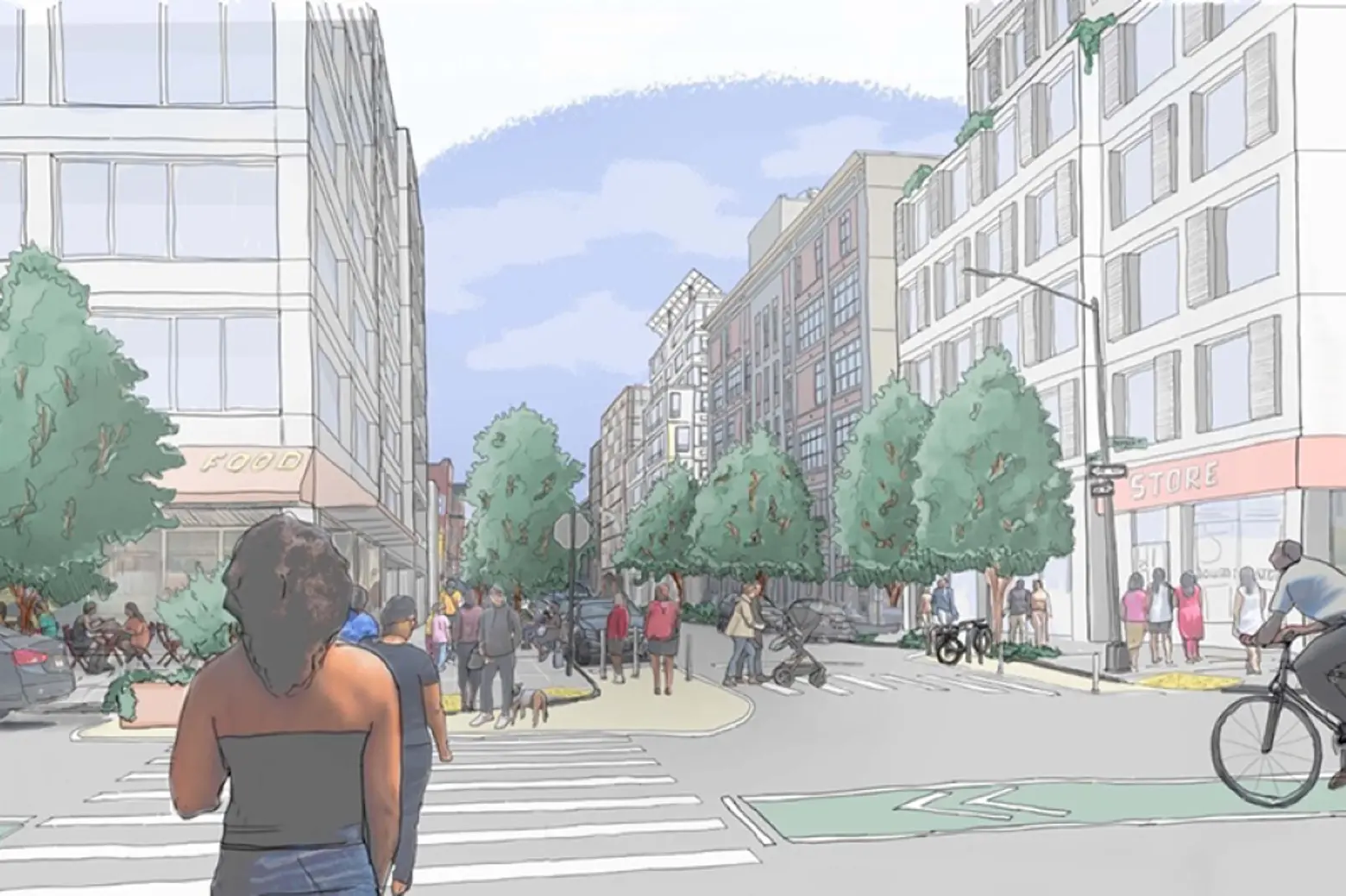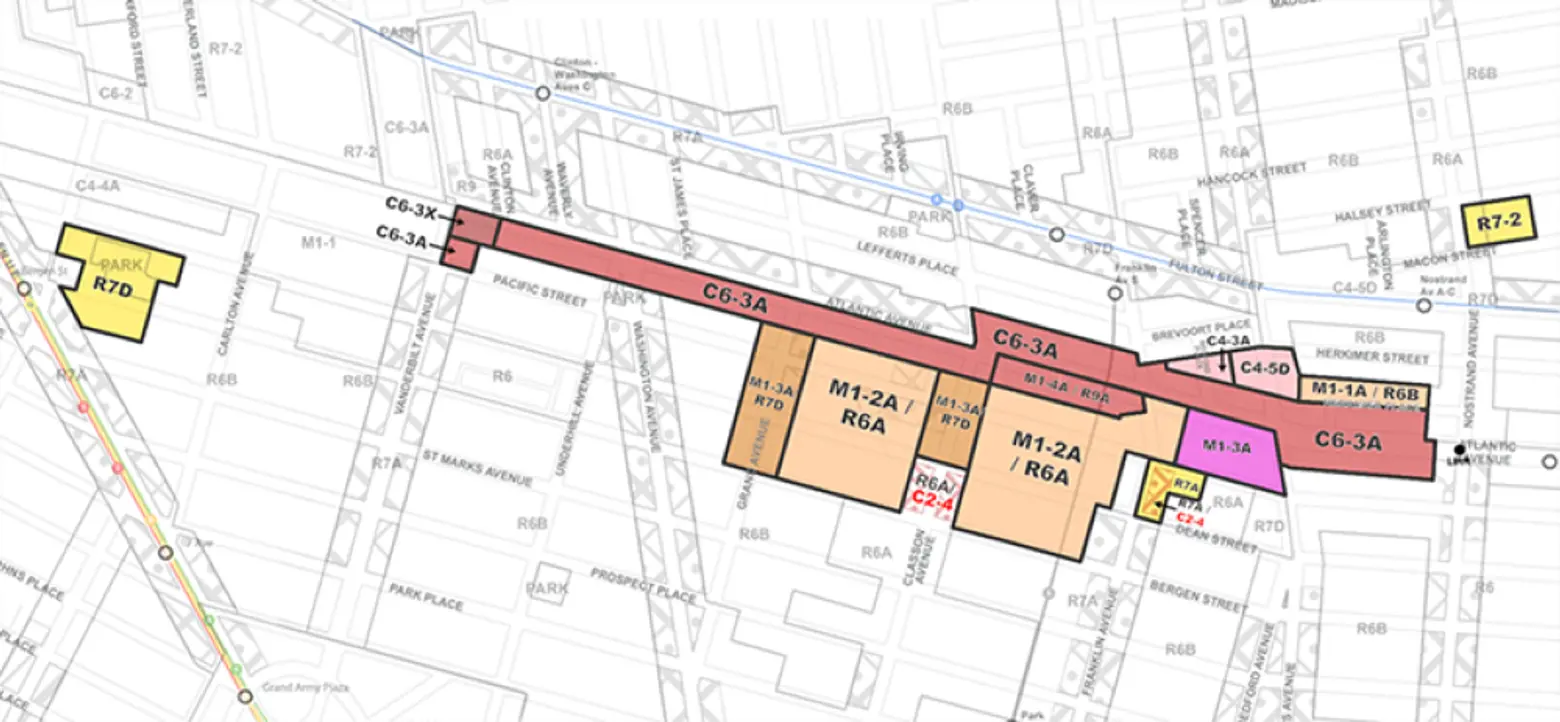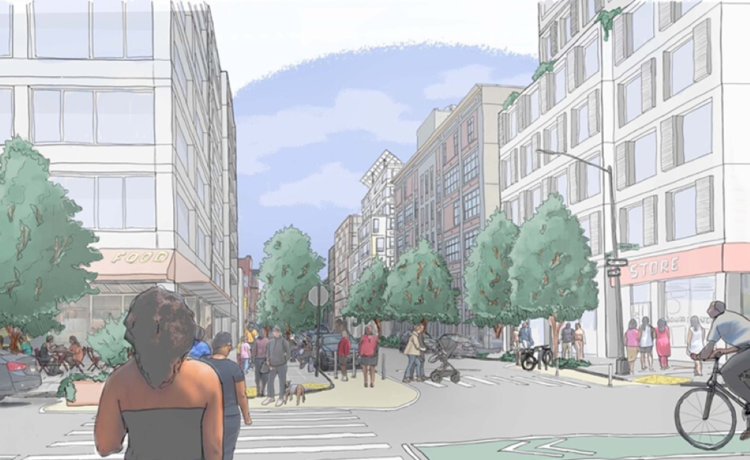
Rendering of Atlantic Avenue’s improved, and safer streets, courtesy of DCP
A plan to create thousands of new apartments and add open space to Atlantic Avenue in Brooklyn is moving forward. Mayor Eric Adams on Tuesday announced the start of the public review process for the Atlantic Avenue Mixed-Use Plan, a rezoning that could create roughly 4,600 new homes—1,440 of which will be permanently income-restricted and affordable—and 2,800 jobs along a 21-block stretch of Atlantic Avenue. The plan will also include traffic safety upgrades at intersections along the corridor to improve pedestrian safety, accessibility, and visibility.

“The scope of this project was exhaustive, ultimately delivering a framework that brings us closer toward pursuing comprehensive planning across Council District 35,” Council Member Crystal Hudson, who represents the area, said in a statement.
“Community stakeholders shared local priorities and dozens of community-informed recommendations to ensure this vital section of Brooklyn can support its small businesses, visitors, and, most importantly, protect and uplift its longtime residents. As the process moves forward, I will continue to fight for a final plan that realizes these priorities and delivers a more just, equitable, and vibrant Atlantic Avenue.”
The plan focuses on a stretch of Atlantic Avenue and adjacent streets between Vanderbilt Avenue and Nostrand Avenue. Since the 1960s, this area has been zoned for one-to-two industrial buildings and storage and does not allow for new housing.
Updating the zoning for this area, which is located close to major commercial areas and transit hubs, is a transformational opportunity that can bring thousands of much-needed affordable housing units and jobs to the neighborhood.
The plan calls for high-density housing, including permanently income-restricted and rent-stabilized affordable units, as well as a mix of commercial uses to create “active ground floors.”
With these changes, the area will transform from a procession of vacant lots, self-storage facilities, and auto-shops into a dynamic neighborhood with a mix of residential, commercial, and manufacturing.
On neighboring streets and avenues, the plan would encourage moderate-sized mixed-use buildings with income-restricted affordable housing and “job-generating” uses.
To maintain affordability, the plan includes a nearly $3 million investment from the Department of Housing Preservation and Development’s (HPD) Partners in Preservation program to support community organizations offering anti-harassment and anti-displacement programs for local tenants.
The Adams administration is committing to several street safety projects to improve pedestrian and cyclist safety along Atlantic Avenue and nearby transit corridors. Improvements include painted “neckdowns,” which are raised curb extensions that narrow travel lanes, daylighting for better visibility at intersections, planters, bike corrals along medians, and a new bike lane on Bedford Avenue.
To enhance the pedestrian experience, recent developments in the plan require buildings to be set back from the street, allowing for sidewalks up to 20 feet wide, an increase from the current 8-to-15-foot width.
The plan also includes $24.2 million in upgrades to St. Andrew’s Playground. These enhancements include a new, synthetic turf multi-use field with a running track, upgraded basketball and handball courts, renovated playground spaces, a remodeled public restroom, new seating, shade trees, plantings, and other green infrastructure.
The Adams administration will also improve Lowry Triangle, located near Atlantic and Washington Avenues, to ensure community members better enjoy and use the space.
Additional features of the plan include a zoning incentive for additional publicly accessible open space, storm water and sewage upgrades, and more.
The Atlantic Avenue Mixed-Use Plan builds on community-based planning initiated by local leaders and Brooklyn Community Board 8 in 2013. In September 2013, the Department of City Planning released a preliminary rezoning framework outlining the potential for up to 1,550 income-restricted homes.
The plan will now enter the approximately seven-month Uniform Land Use Review Procedure, which involves recommendations from Community Boards 3 and 8, as well as Borough President Antonio Reynoso, followed by hearings and votes at the City Planning Commission and City Council.
“After years of calls from the community to fix outdated zoning along Atlantic Avenue, our administration is taking real action to rejuvenate the corridor and transform the area into a place where hardworking New Yorkers can live, work, and play,” First Deputy Mayor Maria Torres-Springer said.
“We are thrilled to be kicking off the official public review process for the Atlantic Avenue Mixed-Use Plan that will deliver approximately 4,600 new homes and 2,800 jobs alongside critical investments that will allow Central Brooklyn to flourish.
RELATED:








Recent Comments